Exploring The Sufi Crossroads In Tarim, Yemen
Updated April 2024, Exploring The Sufi Crossroads In Tarim, Yemen was originally published in April 2020
After spending a few days traveling across the Al Mahrah Governorate and camping under the stars with camels and Mahri Bedouins in the Yemeni Empty Quarter, we continued our journey east to Wadi Hadhramaut. After waking up at sunrise in the desert with nothing more than sleeping bags and blankets slung over us, we quickly packed up and headed back toward the main road to grab breakfast at a low-slung cantina and continued our journey.
This day was a long drive day as we had a lot of ground to cover and numerous checkpoints to cross (one of which known to be notoriously difficult). The day dragged on as we continued across the barren scrub desert, with the occasional rock formation emerging from the Earth.
We eventually arrived at Rumah and grabbed snacks for the road, plus to hold us over to get through the following checkpoint. Just beyond the town was the one that we knew we’d be checked more thoroughly. Every checkpoint we’d crossed up to this point just glanced in the car and waved us through, no need to show our paperwork, let alone a passport.
We knew it was coming when we stopped at the checkpoint just beyond, they asked for the paperwork and knew we were foreign. We sat, there was a little arguing (as per usual if you’ve had to deal with checkpoints in not-so-easy-to-travel countries). Eventually, we were told to drive up a dirt road on our left.
Need Travel Insurance and Evacuation Services for Yemen?
Start shopping for travel insurance plans over at IATI Insurance. Readers of the Adventures of Nicole get a 5% discount off your plan.
The Adventures of Nicole partners with Global Rescue to offer the world’s leading medical evacuation and security advisory services. To travel with peace of mind, shop evacuation coverage at Global Rescue.
We eventually arrived at a walled-off yard. Here we sat in the baking sun as they took passports and documents, dreading the fact that we would probably have to open up bags for a search.
About 30 minutes later an officer came back, passports in hand, and waved us on our way. For being a checkpoint we were breaking having to go through, it was a really painless process.
I’m not a stranger to these mandatory checkpoints- in Afghanistan, I’ve been through so many I can’t even count any longer how many random items I’ve had confiscated (including a bottle of vodka- I’ve gotten better at concealing haram these days) and how many times I’ve been felt up by a cheery woman clad in hijab as we giggled back and forth in broken Dari through a thick American accent, in my earlier travels that took me to the North of Yemen back in 2014 I endured the same fate with the awkward feel up behind the fluttering curtain and random bag searches.
After getting the go-ahead we barreled on across a desert plateau bound west, making the occasional stop to pee, usually near some kind of attractive rock formation.
By the later afternoon, we arrived at what felt like the edge of the world- our first glimpses of Wadi Hadhramaut which from here looked like the branch of a tree with finger-like projections slicing the barren land, that offshoot into little side canyons harboring flashes of green date palm leaves and mudbrick palaces.
Want to learn more? Check out my Travel Guide To Yemen
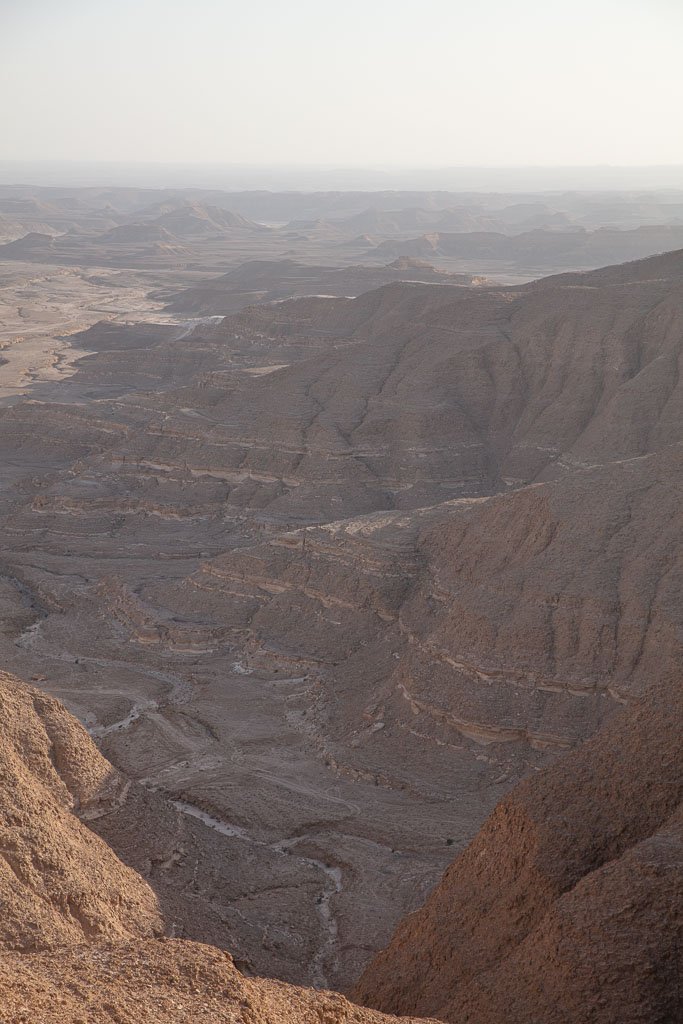

It was a slow journey, winding down from the plateau into Wadi Hadhraumaut, stopping to take photos- Kais, Matt, and Karen laughing at me as I walked back to the car from the edge with my niqab drawn down and my black sunglasses on, nicknaming me Um-Haleema-al-Alaski.
We made it down into Wadi Masileh just as the last glimmers of light faded away, watching as smiling kids kicked soccer balls on the roadside as we passed the villages of Husn, Aynat, and Qasam.
On our arrival in Tarim, Mohammed, the man who would be helping us sort out any kinks along the way in the Hadhramaut welcomed us into an apartment he had arranged for us to stay at. Kais and Mohammed dropped us off and would later return with a Yemeni rendition of a pizza, fries, and chicken for dinner.
One of Mohammed’s first questions over dinner was if I was married- apparently, he was shopping for wife #4 and I fit the description of what he was looking for, unfortunately for Mohammed, I already have one at home.
Our first adventure into Tarim was to explore the rambling souq, a true highlight of the dusty town.
Read more about my experience camping in the Yemeni Empty Quarter
Tarim
Tarim, nicknamed the “Place of Miracles” has long been a Sufi and Islamic learning center that has attracted both students and pilgrims alike, from all over the world for over a millennia.
Tarim was home to several families that struck it rich overseas who had elaborate palaces built- now crumbling they still are a sight to behold. The blindingly white Al Muhdhar Mosque is a main attraction for the few who make it to Tarim, home to the highest minaret in all of Yemen at 46 meters, even despite being closed to non-Muslims. The Jameh Mosque houses the Al Kaf Library that houses over 5,000 manuscripts, in Yemen coming only second in place to the Library of Sana’a.
Tarim Souq
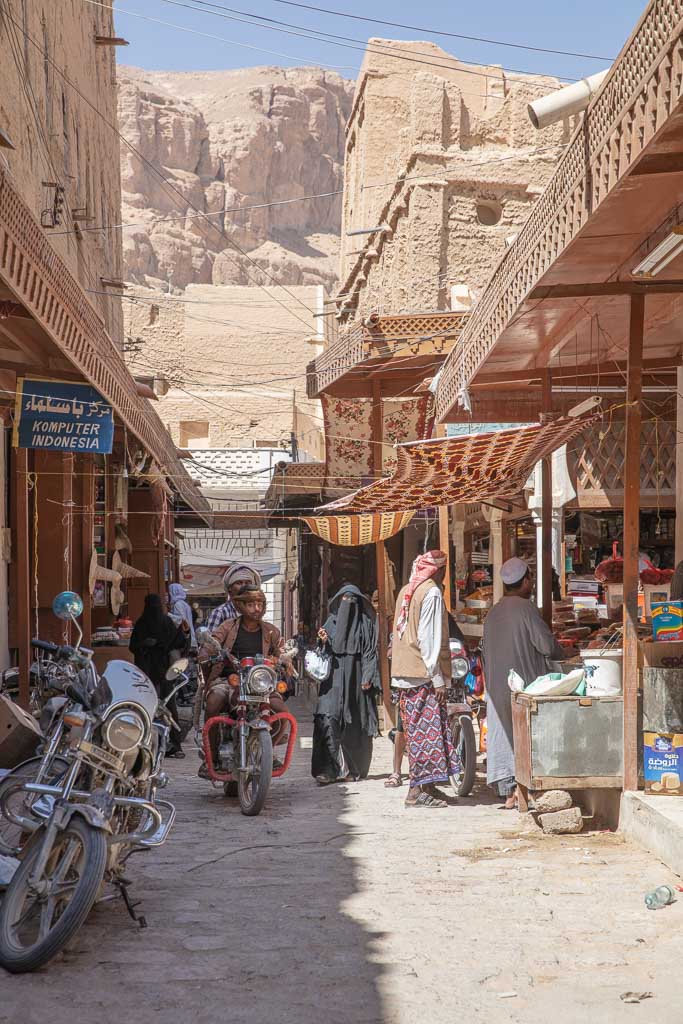

Off the main road that bisects Tarim, we ducked into what you would think was a narrow stone alley at first glance, but was upon rounding the corner, one of the main thoroughfares of the Tarim Souq.
A glance back from where we walked in off the street was a scene out of what your childhood fantasies of Arabia probably envisioned- a narrow alley, backed by the craggy bounds of Wadi Harhramaut, women with no identifying features aside from their dark eyes and the bridges of their noses exposed from the narrow slit in their niqabs, tiptoeing past men and children with abayas billowing in the breeze laced with the spicy scent of cardamom, fenugreek, cumin, turmeric, anise, and fennel that permeated from the bowls of shops.

Our first stop on arrival at the Tarim Souq was a fouta shop where the other three deliberated between different fouta (the man-skirt you see most Yemeni males donning) to purchase for gifts, and I snuck photos out the door of the man across this particularly wide souq alley, chatting with his neighbor (who I can only assume is his competitor) selling dried fish.

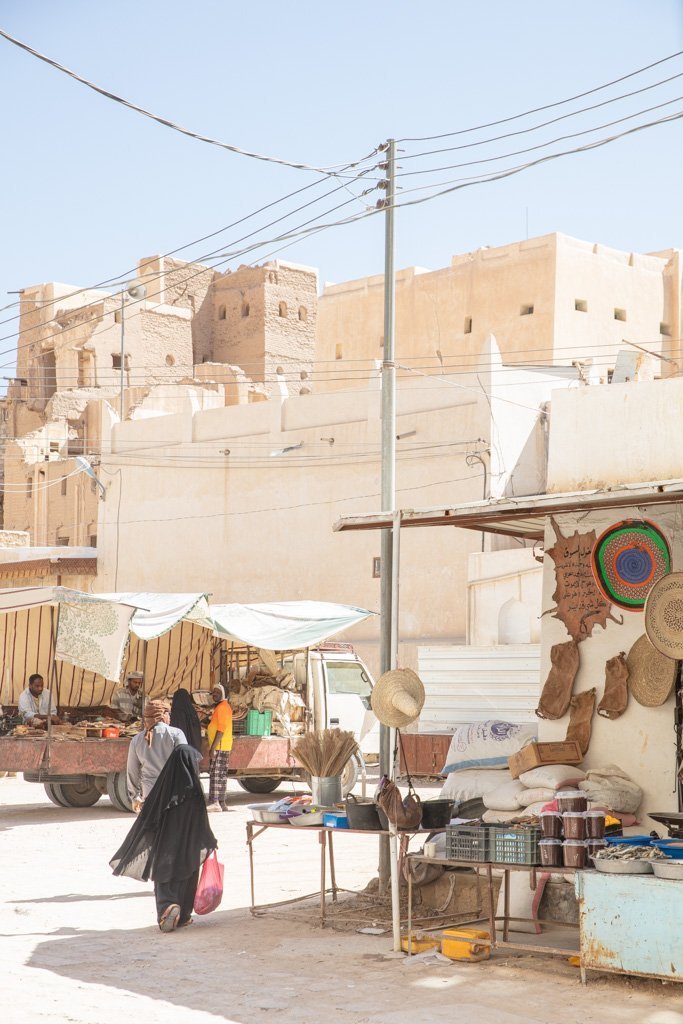
The dried fish salesman appeared to also man the shop directly to his right (or maybe it was just that his fishy-wares spread over into the entry of the madhalla and basket shop next door (madhalla are the pointy Yemeni witch’s hats you’ll see shepherdesses out in). On the intersections of the very alley the fouta shop was on and the perpendicular alley there was a truck, with the back half of it draped in cloth- you guessed it, selling more dried fish.
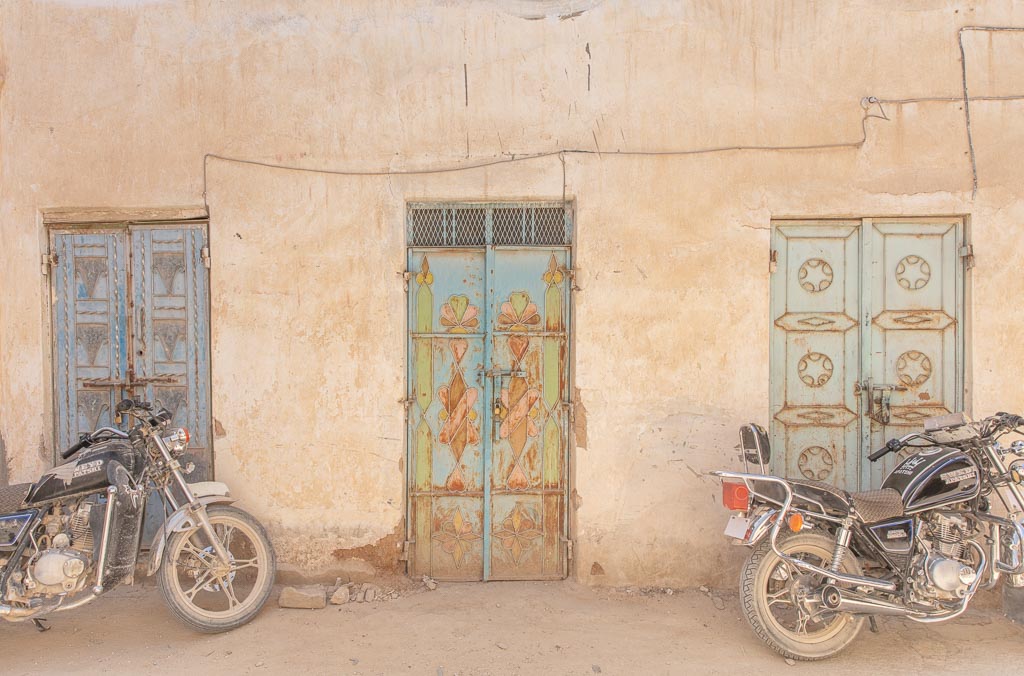
Parts of the souq seemed to meander off into neighborhoods clad with colorful doors and motorbike-lined backstreets.
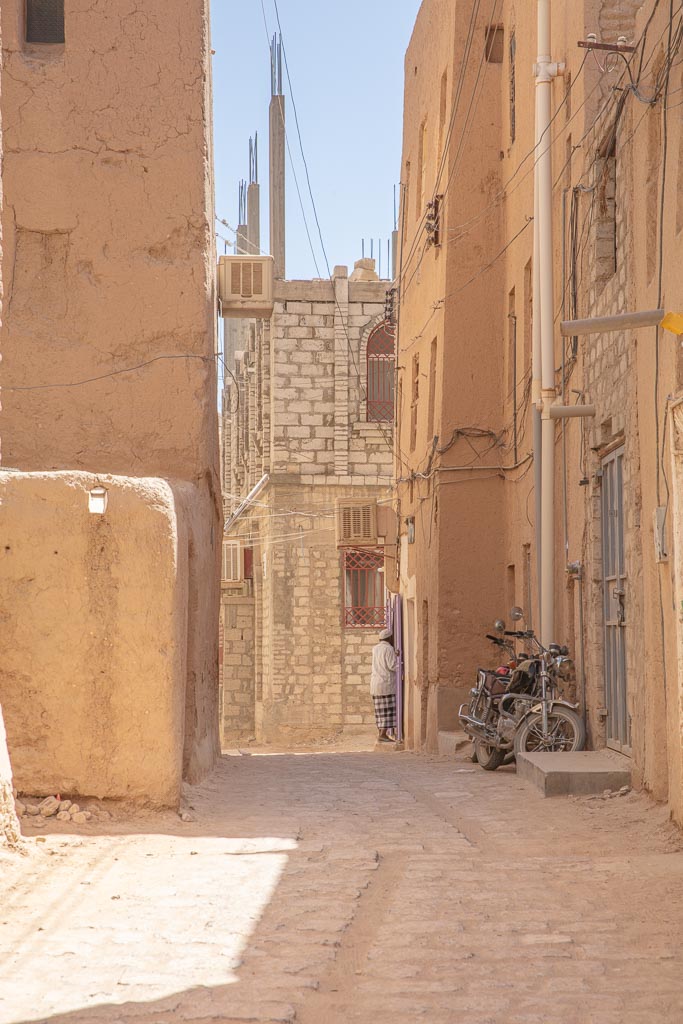
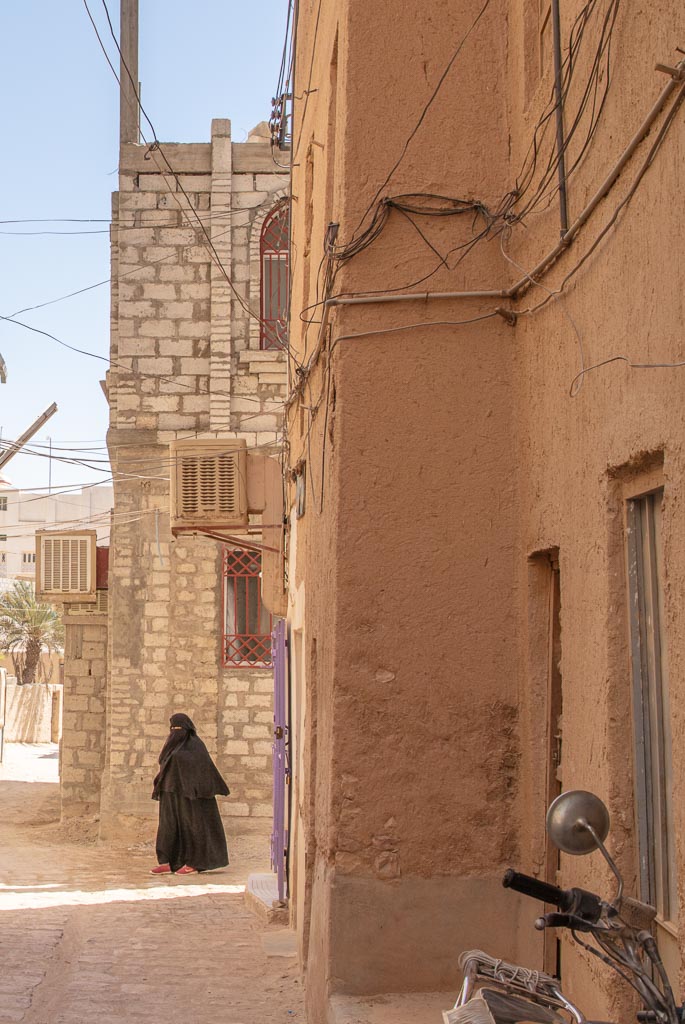
Given the conservative nature of Tarim and the Hadhramaut as a whole I was surprised to see as many women as I did out and about shopping in the souq. Of course, the number of men far outnumbered the women.
Several younger women even stopped me as we passed through the souq to have conversations, ask where I was from. One even giddily practiced her English with me in a women’s clothing shop from behind her niqab and thick eyeglasses, before grabbing my arms and telling me she wanted to visit my country one day too and welcome me to hers- I could see her smiling behind her ever-so-slightly sheer veil.
Click here to read more about traveling in Yemen’s Al Mahrah Region
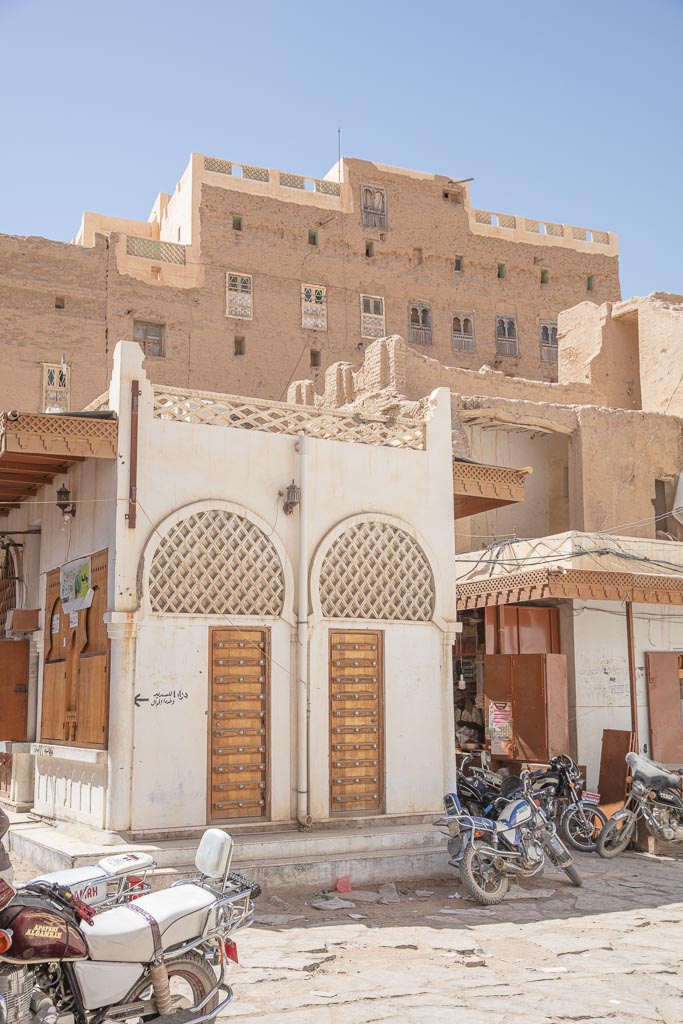
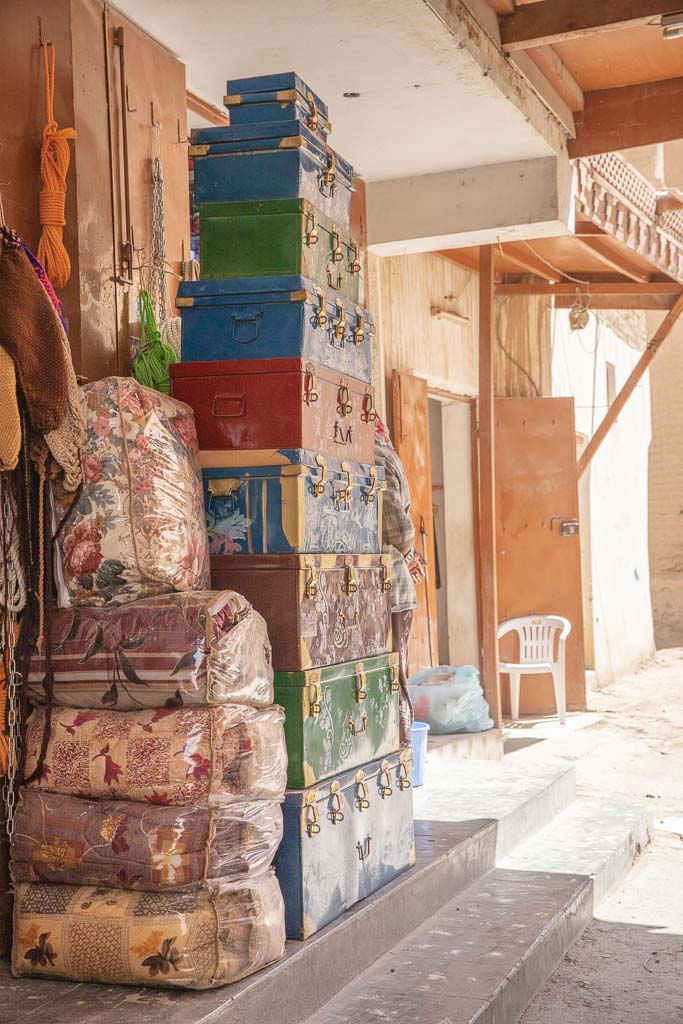

Al Muhdhar Mosque

Al Muhdhar Mosque is a beautiful, blinding-white historic mosque, located right in the heart of Tarim. The Mosque of Al Muhdhar was built in honor of Omar Al-Muhdhar bin Abdul Rahman Al-Saqqaf, an Islamic leader of Tarim in the 1400s.
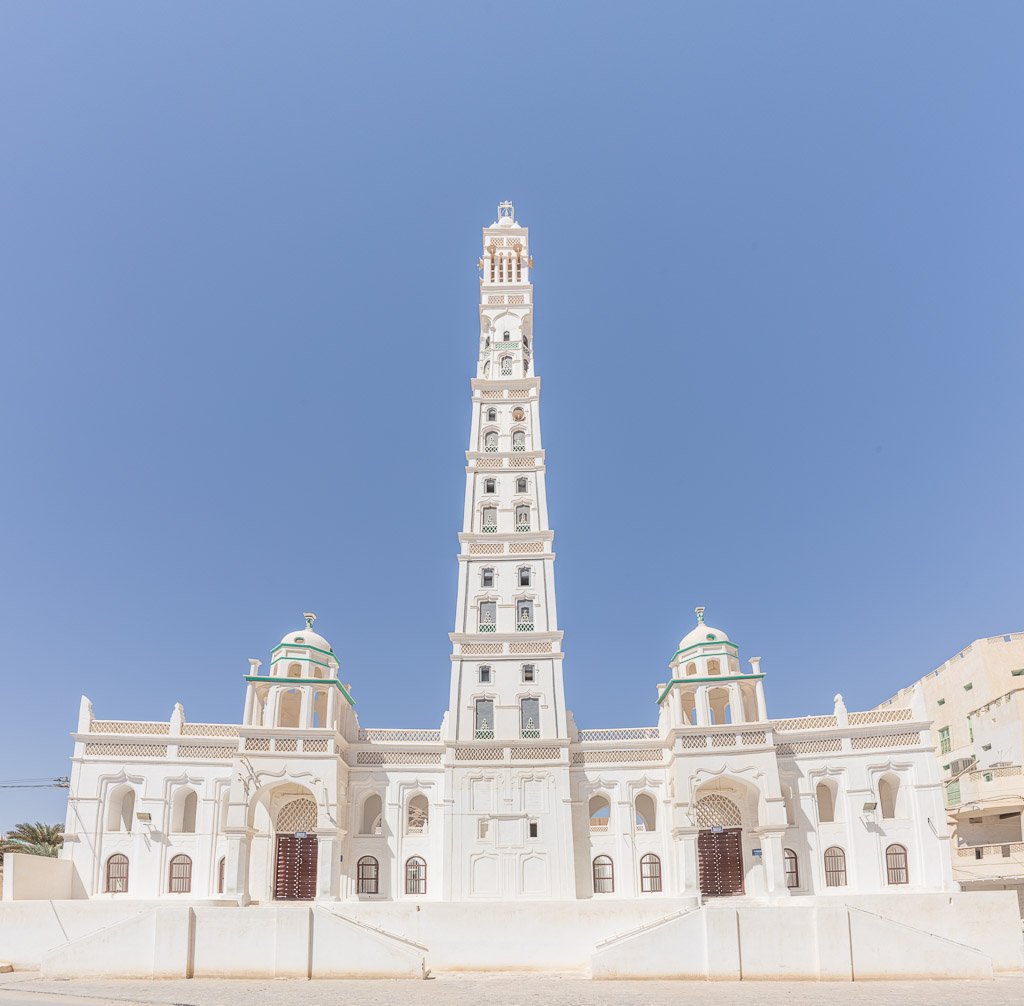
The giant white minaret of Al Muhdhar Mosque is the tallest minaret in all of Yemen at 46 meters in height. The minaret was designed by an architect by the name of Awad Salman Afif al-Tarmi. The mosque houses a qibla that is decorated with geometric, flower designs and scriptures, however, non-Muslims are not permitted to enter to see the interior or courtyard of Al Muhdhar Mosque.

Got that otherwordly Yemeni island on your mind? Check out my Socotra Travel Guide to plan your visit
Dar al Mustafa Madrasa
Tarim is also home to the Dar al Mustafa, a still-popular madrasa (Islamic school). Students come from as far as Indonesia and Malaysia, and even Britain to study at Dar al Mustafa, you will more than likely pass a young man in the souq or on the street that has traveled to Tarim from outside to study at this Islamic university.
The university opened in 1997, founded by Habib Umar bin Hafiz, a Sunni Sufi scholar. The school focuses on Sufi teachings of Hadith (sayings of the Prophet Mohammed that offer guidance to Muslims), Adab (Sufi spiritual Islamic etiquette), Fiq (Islamic jurisprudence), and Tasawwuf (Sufi sciences of the heart).
Dar al Zahra Madrasa
Dar al Zahra Madrasa is the women’s Islamic university is the parallel institute to Dar al Mustafa, offering education for female Muslims. The school, like its male counterpart, has attracted students from all over including the Far East, Europe, East Africa, and the Americas.
Dar al Zahra is actually quite unique, as there are very few madrasas for women, especially ones that attract women to travel in from western countries. Dar al Zahara, again, like its male madrasa counterpart focuses on the teachings of Hadith, Adab, Fiq, and Tasawwuf.
For an interesting read on a visit by British journalist Rachel Aspden to Dar al Zahra, click here.
Click here to read up more on traveling in South Yemen
Rabat Tarim
Rabat Tarim is one of the oldest international madrasas still in operation. Opened in 1887, and supervised by the mufti of the Hadhramaut, the school focuses on Islamic sciences.
Rabat Tarim was closed during South Yemen’s time under the People’s Democratic Republic of Yemen from 1979-1991. The school was re-opened in 1991 and has been open to Yemeni and non-Yemeni Islamic students ever since.
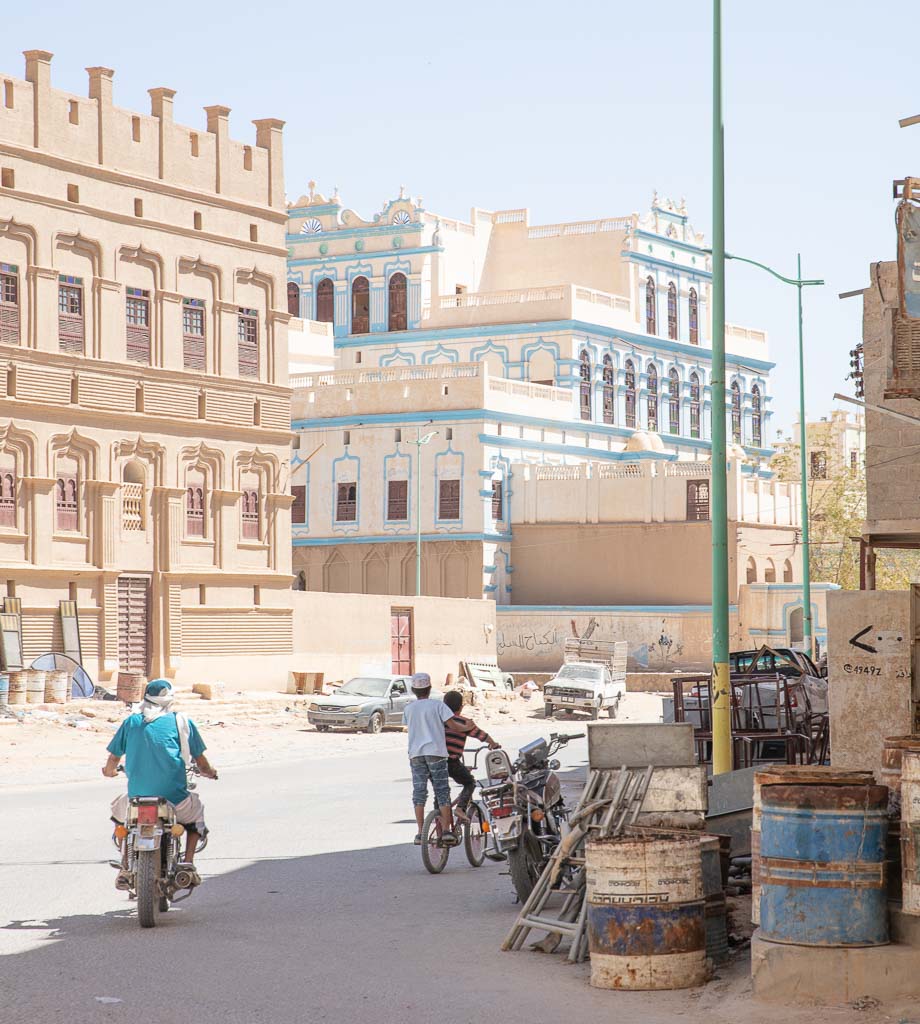
Tarimi Palaces
Tarim was home to a number of noble families including the Al Kaf family and the Bin Yahya family. About 30 palaces were built between the 1870s-1930s as members of these families became wealthy from investments abroad.
Many of the palaces incorporate architectural influences from India, Pakistan, and Southeast Asia, exhibiting Mughal, late Baroque, Art Nouveau, British Colonial, Neo-Classical, and Modernist styles, while still retaining millennia-old Hadhrami mudbrick construction techniques.
Tarim palaces that are particularly noteworthy are Qasr Ishshah, Hamtut, Monaisura, Al Mahar, Al Rinad, Dar Assalam, and Tawahi.
Al Jameh Mosque & Al Kaf Library
Al Jameh Mosque features the impressive Al Kaf library that features over 5,000 manuscripts from various fields of knowledge including, Sufism, medicine, Islamic law, mathematics, history, agriculture, about 400 of which are believed to be unique to the Islamic world. The only library in Yemen containing more manuscripts is the Sana’a Library.
Curious about Sana’a and Dar al Hajar? Click here to read and see photos from my 2014 visit
Aynat
While not in Tarim per se, Aynat is an ancient cemetery that served as a necropolis and resting place for Imams and their families from the Hadhramaut region. The cemetery features countless headstones and several mausoleums. Unfortunately, I did not get to visit Aynat on my most recent trip to Yemen.

How To Get To Tarim
Tarim is located on the main N5 Highway about 35 kilometers east of Seiyun. Getting to Tarim will require the expertise of a local fixer and driver well versed in security of the Hadhramaut region.
If you are interested in visiting, please contact us at adventuresoflilnicki @ gmail.com.
Read more on my Hadhramaut Travel Guide
Have Any Questions About Tarim, Yemen?
Ask in the comments section below.

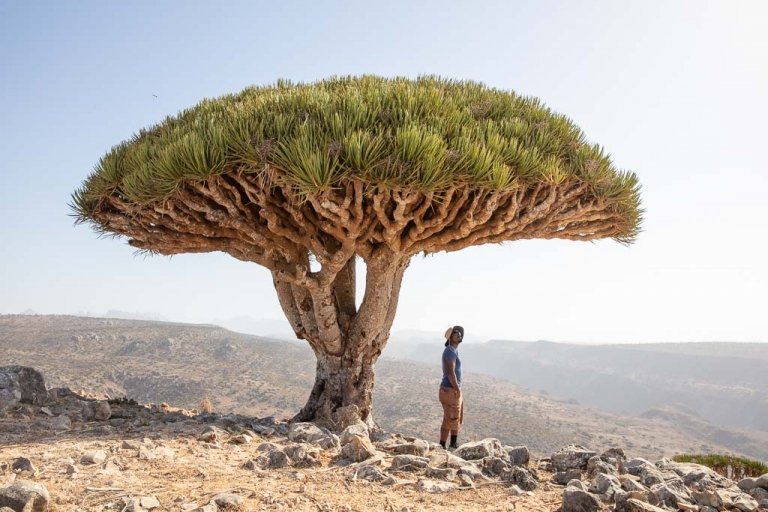

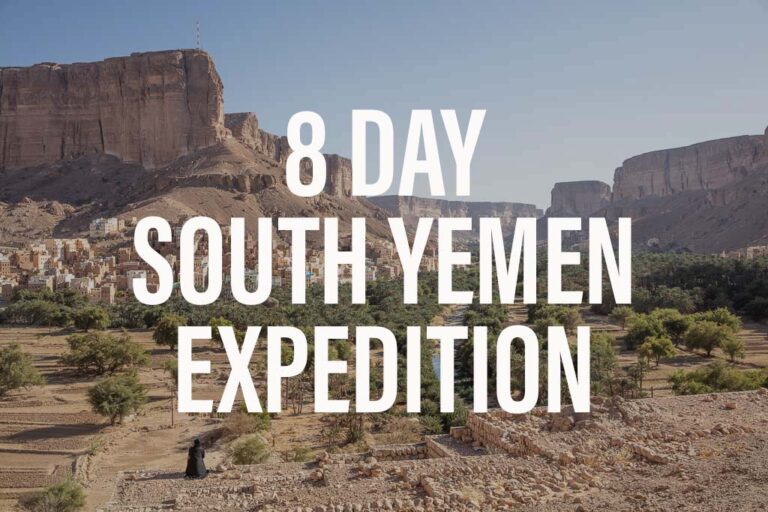

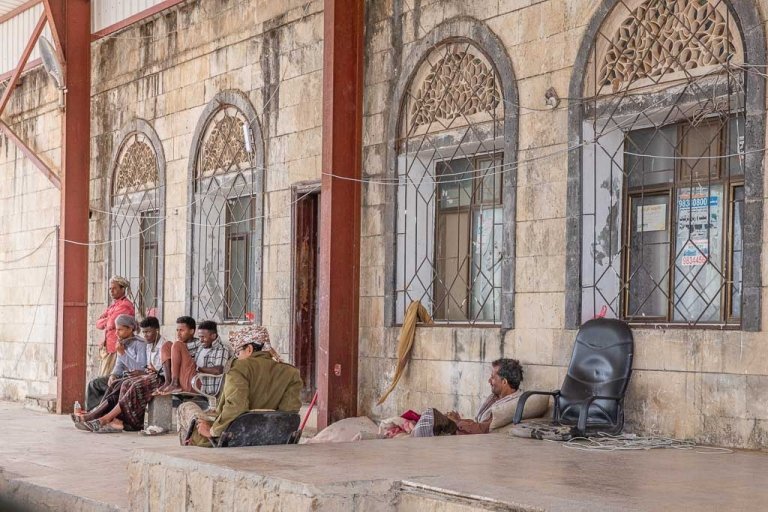
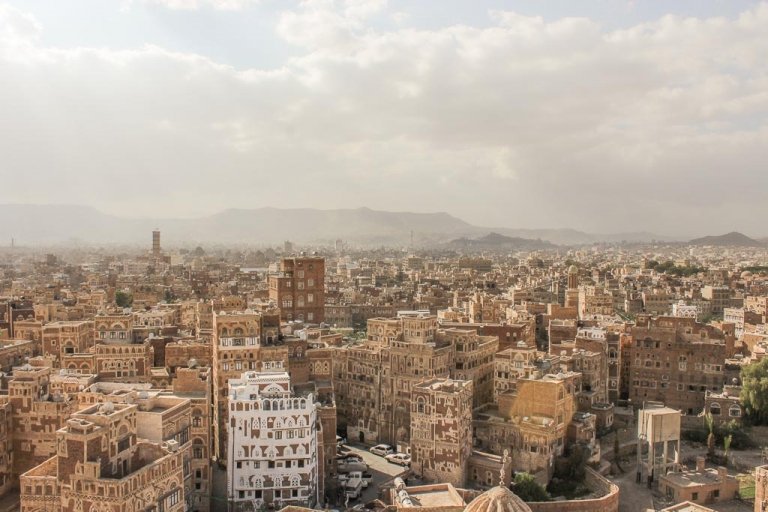

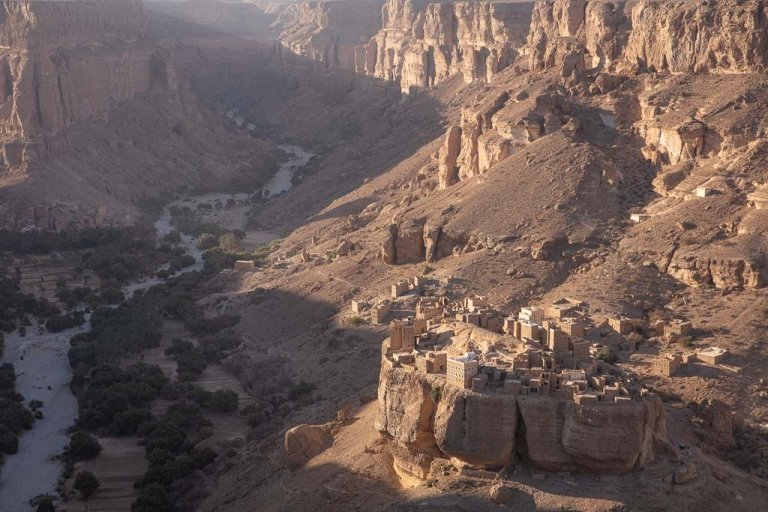
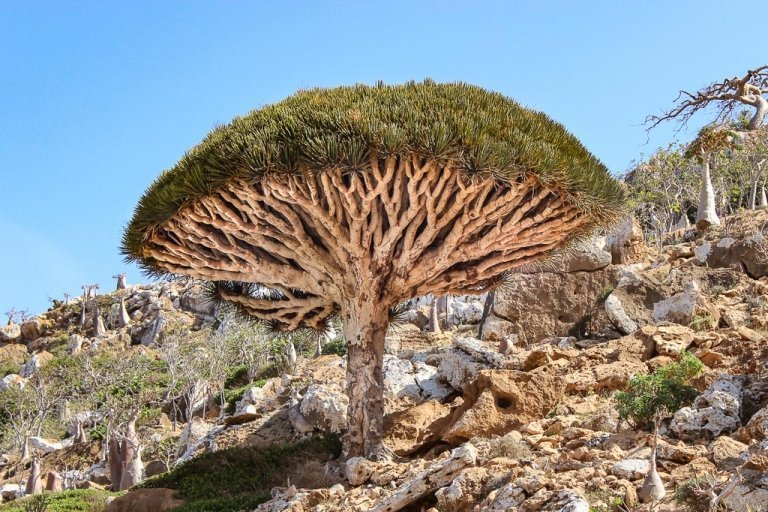
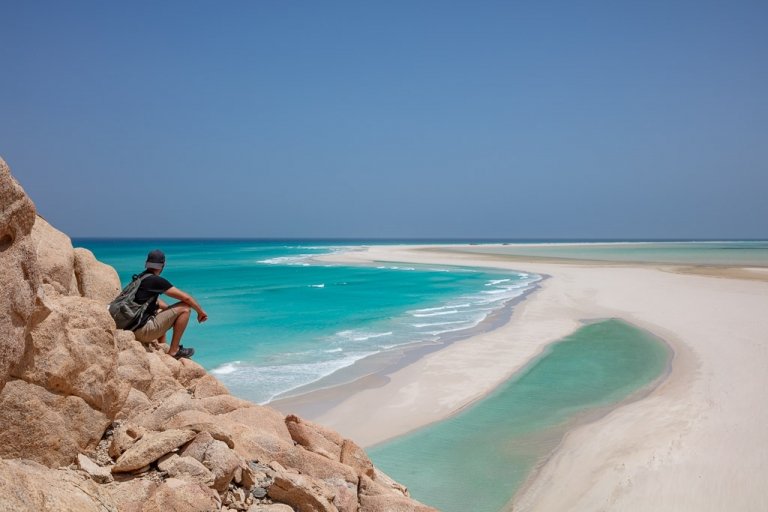
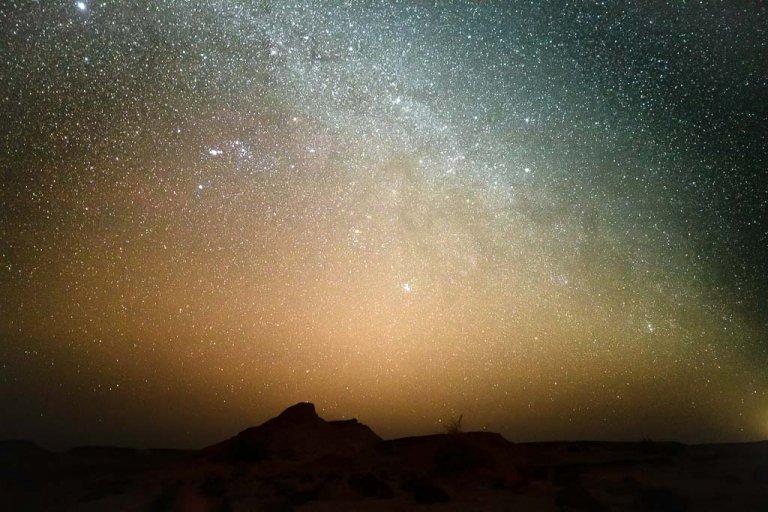
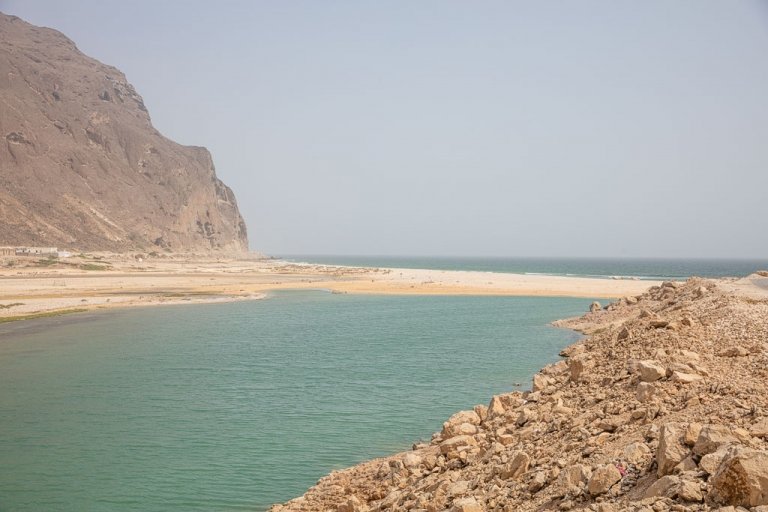
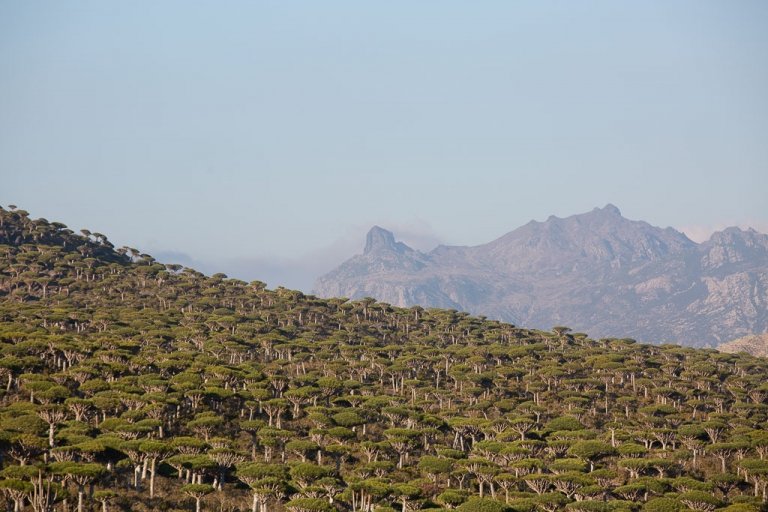
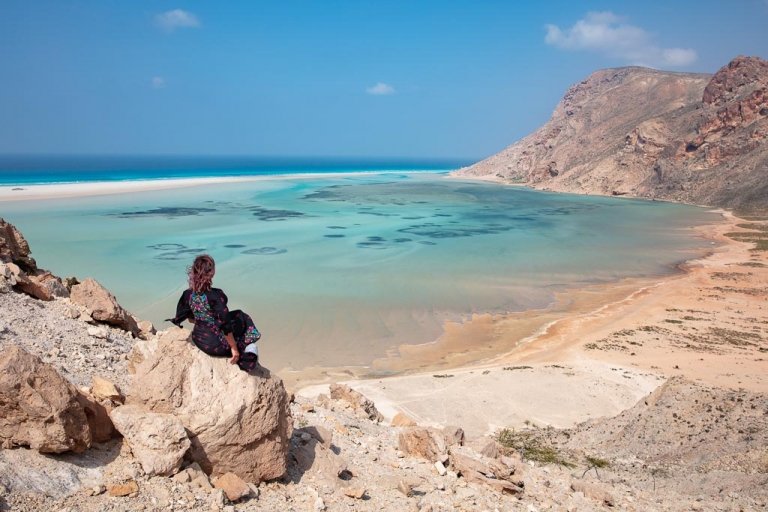
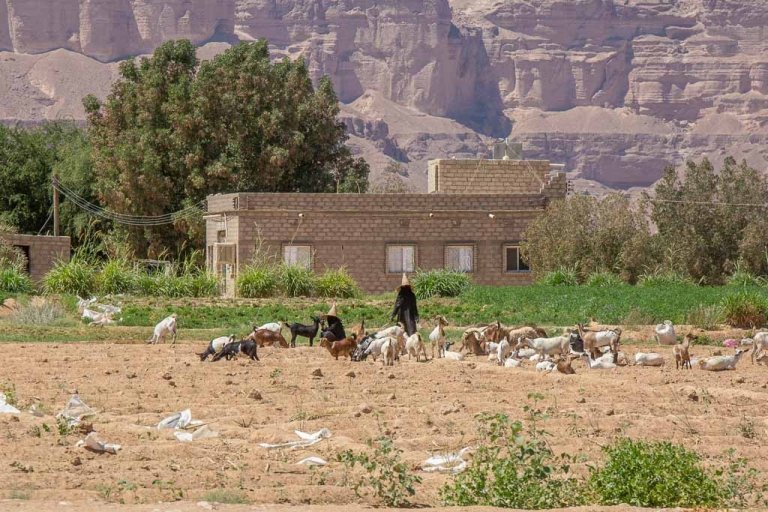
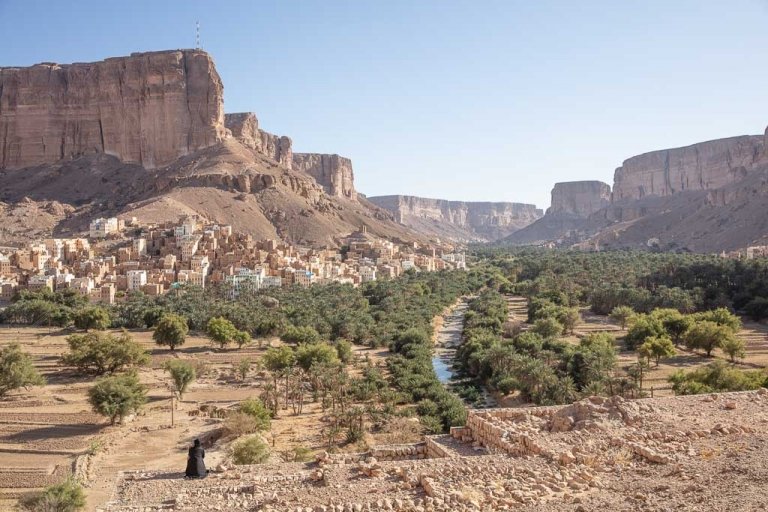

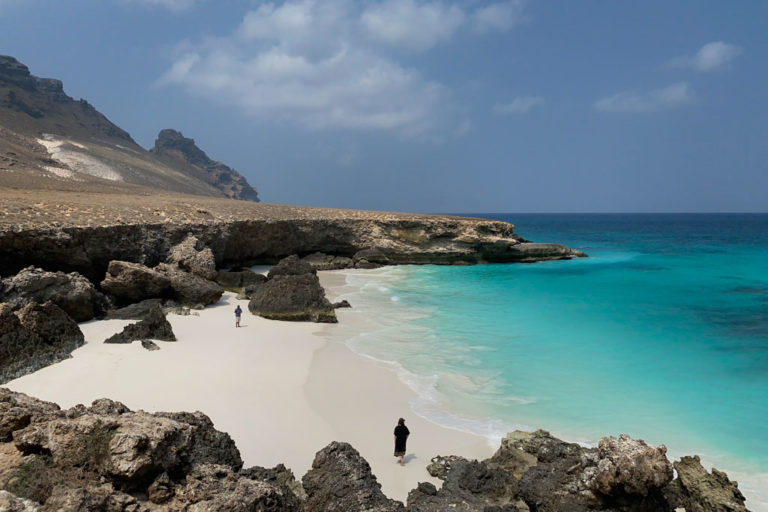
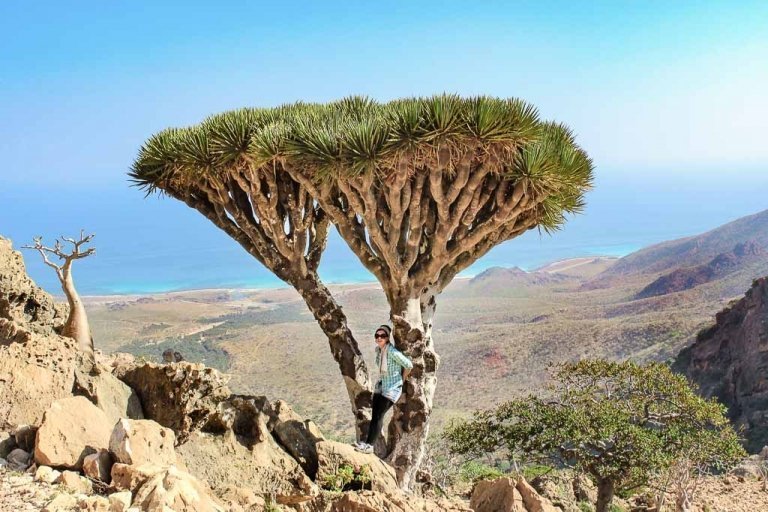

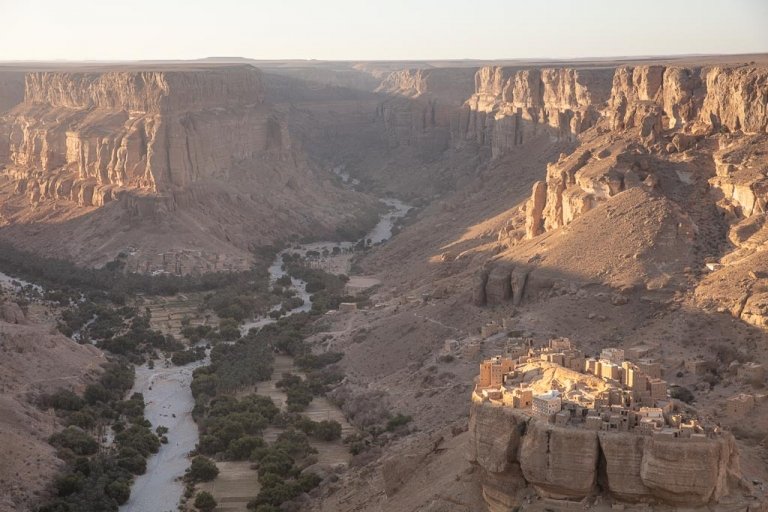
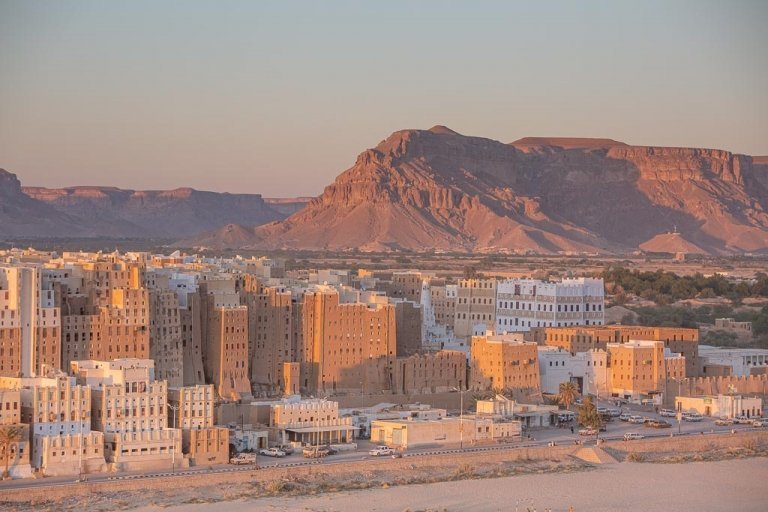



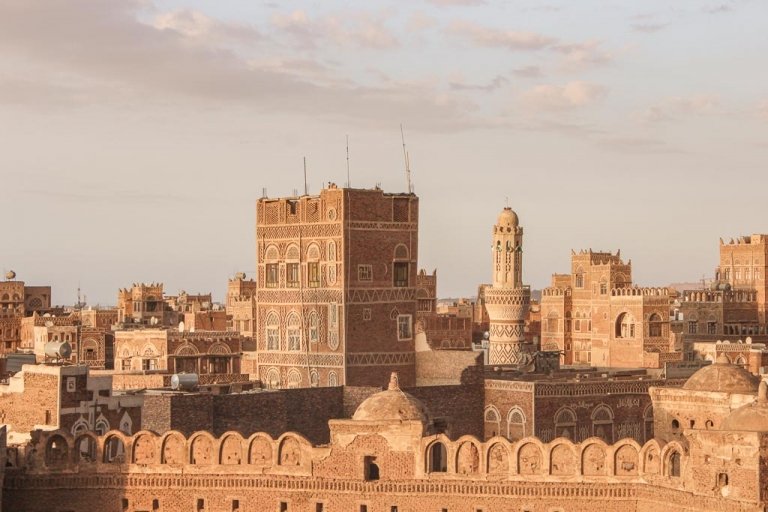
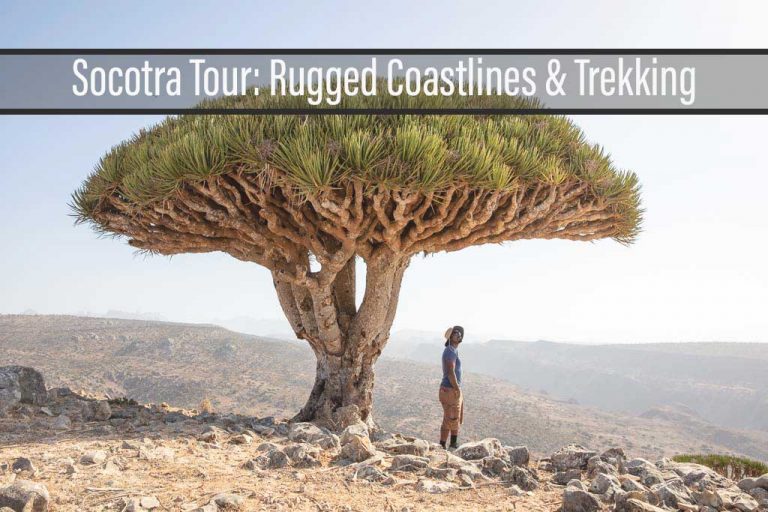

Enjoyed everything on this. Thanks!
Thanks!